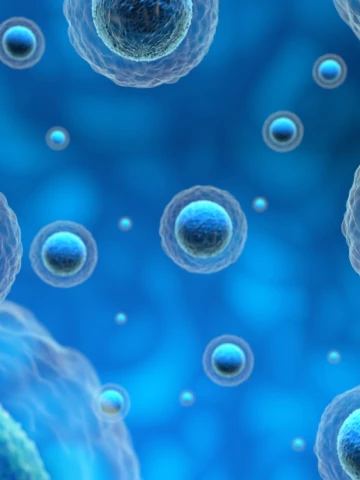
Can technology’s future be found in microbiology?
July 29, 2019
Since Alexander Fleming mistakenly discovered penicillin in 1928, bacteria’s industrial and environmental use has been growing at an almost exponential rate. But it’s not only the pharmaceutical, food or biomining industries that stand to benefit from the amazing capabilities of these microorganisms, they have now also become a central focus for the tech sector in its search for the next big breakthrough.
Bacteria as storage facilities
We are at a point in our history, as human beings, in which we are almost more important in terms of the data we generate than the genes that we carry. The research group IDC estimates that by 2025, we’ll be producing more than 160 zettabytes of data every year.
This data explosion doesn’t just inspire the surge of technology related to big data, machine learning or artificial intelligence, it also obliges us to search for space where we can store such a mind-boggling quantity of information. One of the solutions that was proposed years ago is to use DNA as a storage facility. These molecules’ big advantages include large storage capacity, replication, transmission and stability. But DNA’s size is what makes it most attractive to major companies like IBM – it’s been calculated that DNA can hold a trillion bytes of information in just one cubic millimeter.
Recently, a team led by Federico Tavella at the University of Padua in Italy even designed and tested a system that allows for both the storage and retrieval of information in bacterial nanonetworks.
The system that the investigators piloted included the insertion of the message “Hello World,” via gene-editing techniques like CRISPR, into a DNA sequence that codified the words in a specific region of the genetic material. In this case, the message was encoded in the region where genes that are resistant to the antibiotic tetracycline are located. To verify that the transmission of information happened through conjugation, which is when two bacterial cells exchange information, the researchers used another target strain that didn’t have antibiotic-resistant genes. Once both cells were in contact and it was confirmed that the target strain had received the antibiotic-resistant gene, the researchers sequenced its genetic material and found the message “Hello World.”
One of the advantages of this prototype in terms of its applications is that there is already an ideal language that can codify the information, the dialects of RNA and DNA, which use nitrogenous bases as their programming language. This language is made up of 16 basic orders that are codified in base sequences like, for example, AUG, which would indicate to begin the program. The loops, on the other hand, are programmed with the sequences GAC, GAU. However, this prototype presents two major problems. First, there is the cost and second, the speed of transfer, something that the researchers are currently working on.
Another approach that uses molecules for information storage was carried out in the W.M. Keck Center for Molecular Electronics, where researchers implemented a system of molecules that store information in the bit format. The molecule they used is called Bacteriorhodopsin. It reacts to light, undergoing structural changes in a way that could be compared with a bio-stable circuit of ones and zeros. The researchers estimate that the information stored in this molecule would be stable for five years. In fact, the Center for Molecular Electronics has already built a prototype for a memory system through which the Bacteriorhodopsin can store the information in a three-dimensional matrix.
Biological processors
Not only can bacteria help us with storage, but they can also contain mini-computers. This summer, a team of developers and scientists from the Swiss Federal Institute of Technology in Zurich managed to create a dual-core processor inside a human cell. This processor is completely functional and can perform operations like comparing entry data or adding binary numbers. The results of those calculations are codified in a protein.
This major advance links to previous research conducted by scientists at Imperial College in London that demonstrated that logic gates, which are used for processing information in devices like computers and microprocessors, can be built out of gut bacteria and DNA. The objects of these types of processors aren’t as much to substitute what we are using today as they are complementary. Their applications are enormous, especially in the field of bioengineering and medicine, where the technology could, for instance, improve the diagnosis and treatments of diseases.
We can conclude that although the journey has just begun, the union of microbiology and technology will undoubtedly change the way we think about both medicine and programming.